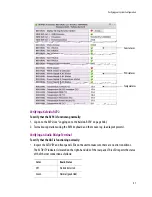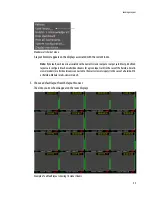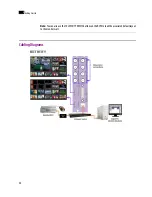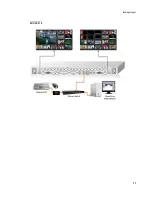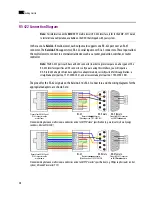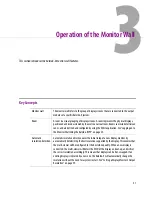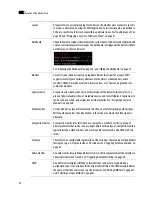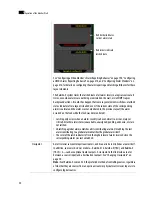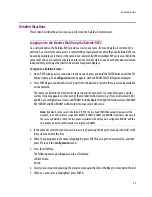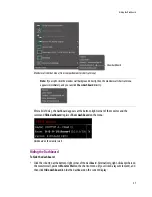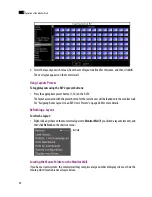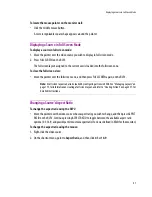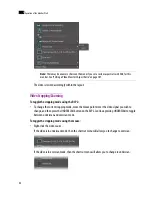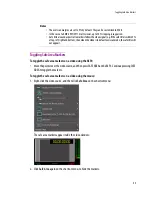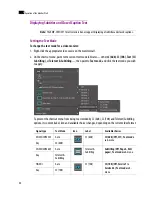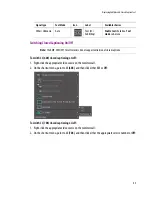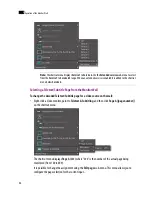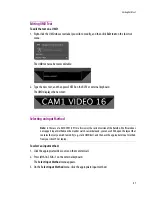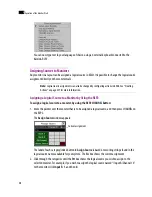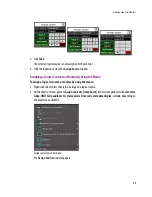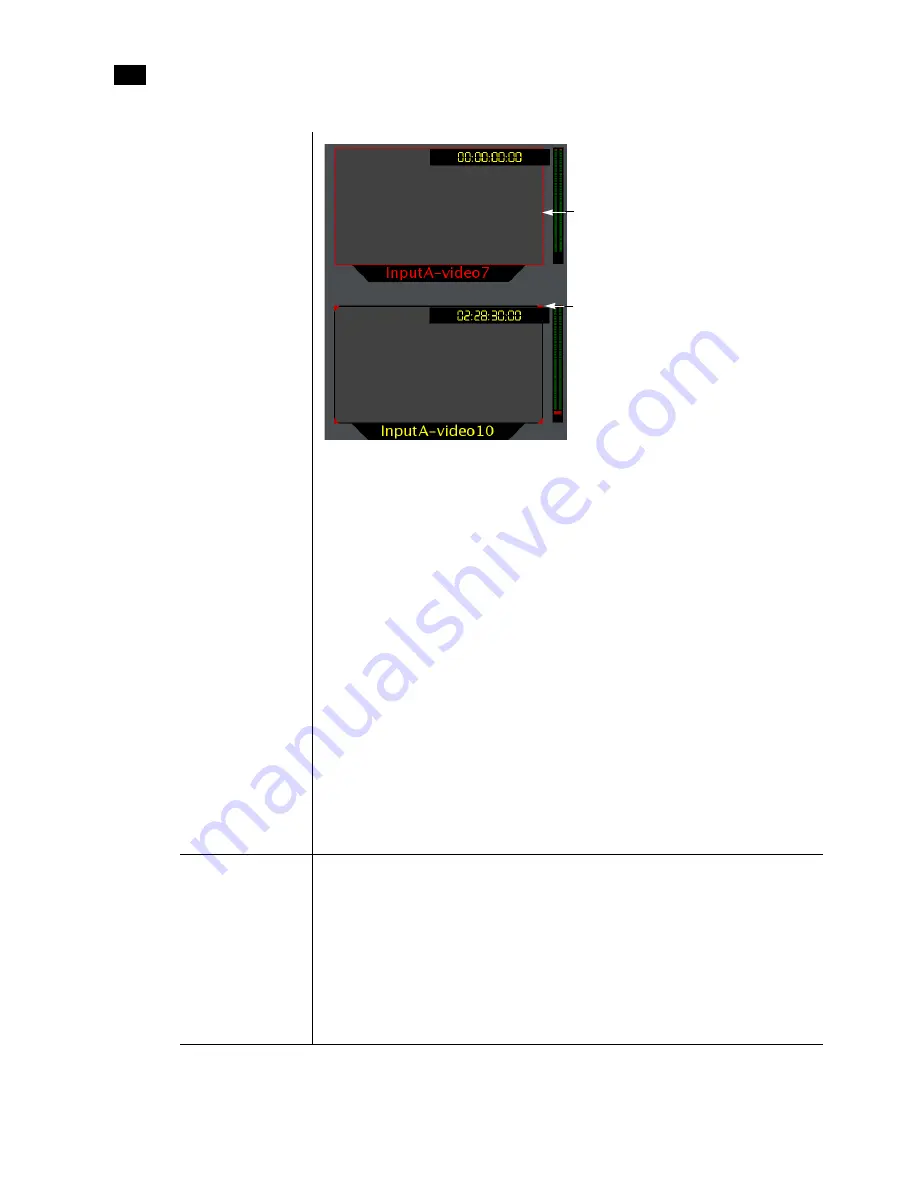
34
Operation of the Monitor Wall
3
See “Configuring a Video Monitor’s Alarm Reporting Behavior” on page 196, “Configuring
a UMD’s Alarm Reporting Behavior” on page 214, and “Configuring Alarm Monitors” on
page 216, for details on configuring the alarm reporting and latching attributes for these
layout elements.
The Kaleido-X system tracks the latched state of all alarm levels in a logical source at all
times, even when alarms are not being monitored on the wall, or via SNMP traps or
background actions. It could thus happen that some layout elements will show a latched
status indicator after a layout is loaded, even if the current state of the corresponding
alarm is normal and the alarm was not monitored in the previous layout (the alarm
occurred on the feed while the feed was not monitored).
• Latching only occurs when an alarm severity is above normal (i.e. minor, major, or
critical). All other alarm states (unavailable, unassigned, pending, unknown, etc.) are
not latched.
• Unlatching a global alarm unlatches all its contributing alarms. Unlatching the last
alarm contributing to a global alarm unlatches the global alarm itself.
• The color of the latch indicator reflects the highest level of alarm received since the
corresponding alarm was last unlatched.
Crosspoint
A multi-viewer can control upstream routers, and it can also be controlled as a router itself.
In addition, some multi-viewer models—Kaleido-X16, Kaleido-X (7RU), and Kaleido-X
(7RU) × 2—can have optional router outputs. A crosspoint is the link inside a router
between a source (input) and a destination (output). See “Changing Crosspoints” on
page 50.
Note:
As of Kaleido-X version 5.20, the preferred method of controlling sources, regardless
of whether they are sources from an upstream router or physical multi-viewer inputs, is to
configure logical sources.
Red border indicates
Red corners indicate
current alarm state
latched state
Summary of Contents for Kaleido-X
Page 1: ...Kaleido X User s Manual Part Number M770 2800 111 1 June 2011 ...
Page 8: ...viii toc ...
Page 33: ...Loading a Layout 25 Kaleido X16 ...
Page 34: ...26 Getting Started 2 Kaleido X 4RU ...
Page 152: ...144 Creating Logical Sources 7 ...
Page 178: ...170 Setting Up Rooms 8 ...
Page 244: ...236 Creating Layouts 9 ...
Page 253: ...Detailed Directions 245 3 Under Properties General type a Friendly name for the Action ...
Page 256: ...248 Creating Actions 10 ...
Page 272: ...264 Managing Kaleido RCP2 Users 11 ...
Page 348: ...340 Tally Interface Devices 13 ...
Page 350: ......
Page 352: ...344 Using the Serial to TCP IP Dispatcher 15 ...
Page 406: ...398 Index ...


